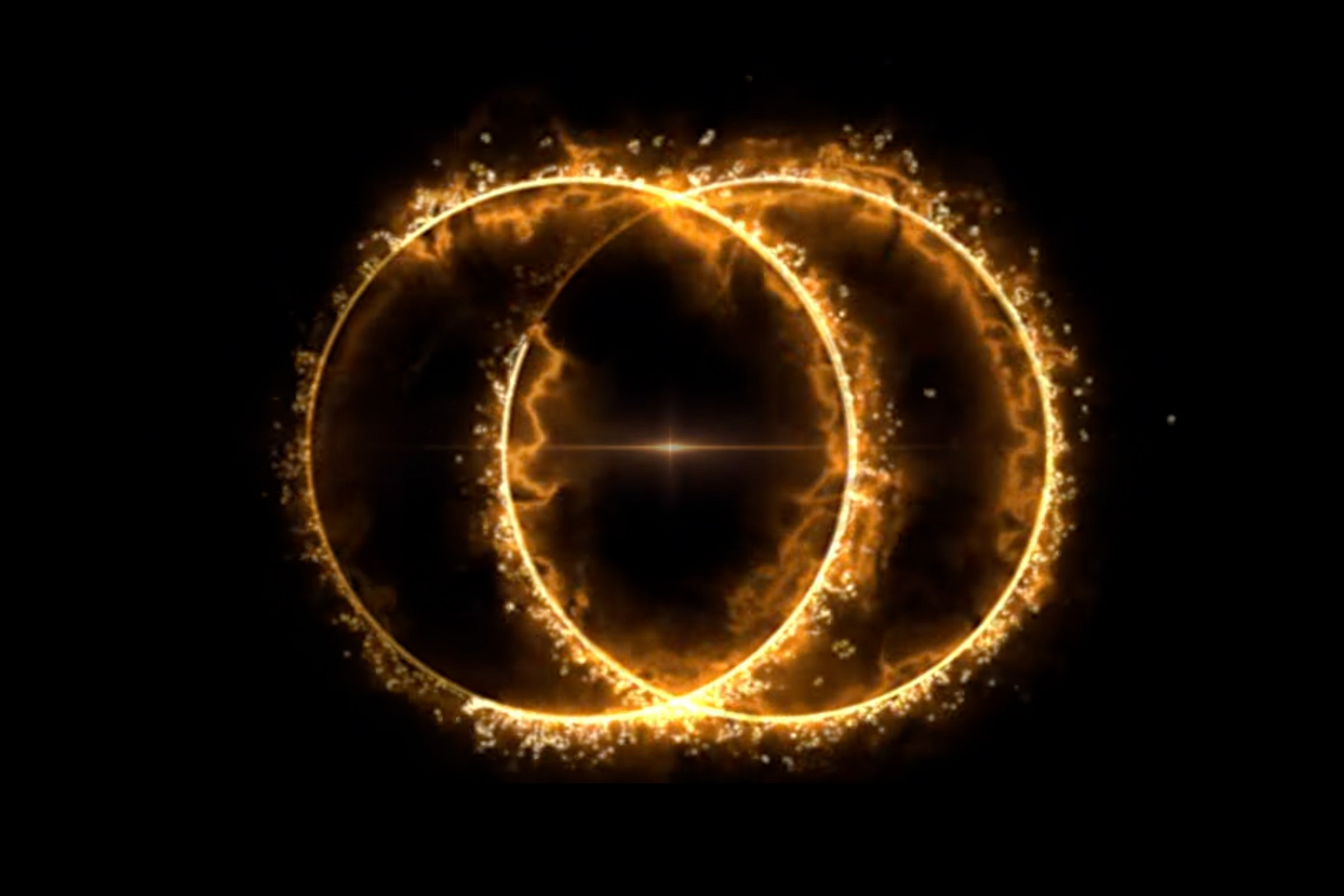Science
Astronomers Discover Massive Twin Rings in Distant Galaxy Cluster

Astronomers have made a remarkable discovery of a vast double-ring structure located approximately 7.5 billion light years from Earth. This extraordinary formation, glowing brilliantly in radio wavelengths, is part of a new class of cosmic objects known as Odd Radio Circles (ORCs). The findings were detailed in a study published in the Monthly Notices of the Royal Astronomical Society.
The newly identified ORC, designated RAD J131346.9+500320, is notable for its immense size, stretching hundreds of thousands of light years across. It is only the second instance of a double-ring structure being observed, highlighting the enigmatic nature of ORCs, which have only been identified since their initial discovery six years ago.
ORCs are believed to be composed of magnetized plasma and are detectable only in radio light. These structures typically encircle a central galaxy and can measure dozens of times the diameter of the Milky Way. Despite their significant size, the processes leading to their formation remain largely unknown, captivating scientists who speculate that these formations may be remnants of cosmic events that transpired billions of years ago.
Ananda Hota, lead author of the study and an assistant professor at the University of Mumbai, remarked, “ORCs are among the most bizarre and beautiful cosmic structures we’ve ever seen — and they may hold vital clues about how galaxies and black holes co-evolve, hand-in-hand.”
The discovery of RAD J131346.9+500320 suggests that its formation may be influenced by interactions with surrounding plasma and the jet emitted from a supermassive black hole at the galaxy’s core. This jet, a powerful stream of particles, could have created the magnetized plasma clouds that were subsequently energized by a significant explosion near the galactic center. Hota explained that this interaction caused the plasma clouds to glow anew, forming the striking radio rings.
In a statement, Pratik Dabhade, coauthor of the study and assistant professor in the astrophysics division at the National Centre For Nuclear Research in Warsaw, Poland, noted, “These discoveries show that ORCs and radio rings are not isolated curiosities — they are part of a broader family of exotic plasma structures shaped by black hole jets, winds, and their environments.”
The research into ORCs is part of a broader exploration of what astronomers describe as a “low-surface brightness universe.” This category encompasses various celestial objects that were once obscured from view but are now being uncovered thanks to advancements in radio telescope technology. Other notable discoveries in this realm include a remarkably spherical supernova remnant and intense stellar objects known as Wolf-Rayet stars, which burn brightly yet exist for only a brief period in cosmic terms.
As the study of ORCs continues, astronomers hope to unlock further secrets about the universe’s evolution and the complex interactions between galaxies and their central black holes. The continued exploration of such cosmic phenomena not only expands our understanding of the universe but also raises profound questions about the nature of existence itself.
-

 Science2 months ago
Science2 months agoInventor Achieves Breakthrough with 2 Billion FPS Laser Video
-

 Health2 months ago
Health2 months agoCommunity Unites for 7th Annual Into the Light Walk for Mental Health
-

 Top Stories2 months ago
Top Stories2 months agoCharlie Sheen’s New Romance: ‘Glowing’ with Younger Partner
-

 Entertainment2 months ago
Entertainment2 months agoDua Lipa Aces GCSE Spanish, Sparks Super Bowl Buzz with Fans
-

 Health2 months ago
Health2 months agoCurium Group, PeptiDream, and PDRadiopharma Launch Key Cancer Trial
-

 Top Stories2 months ago
Top Stories2 months agoFormer Mozilla CMO Launches AI-Driven Cannabis Cocktail Brand Fast
-

 Entertainment2 months ago
Entertainment2 months agoMother Fights to Reunite with Children After Kidnapping in New Drama
-

 World2 months ago
World2 months agoIsrael Reopens Rafah Crossing After Hostage Remains Returned
-

 Business2 months ago
Business2 months agoTyler Technologies Set to Reveal Q3 Earnings on October 22
-

 World2 months ago
World2 months agoR&B Icon D’Angelo Dies at 51, Leaving Lasting Legacy
-

 Health2 months ago
Health2 months agoNorth Carolina’s Biotech Boom: Billions in New Investments
-

 Health2 months ago
Health2 months agoYouTube Launches New Mental Health Tools for Teen Users









